Exploring Myanmar Through the Decades
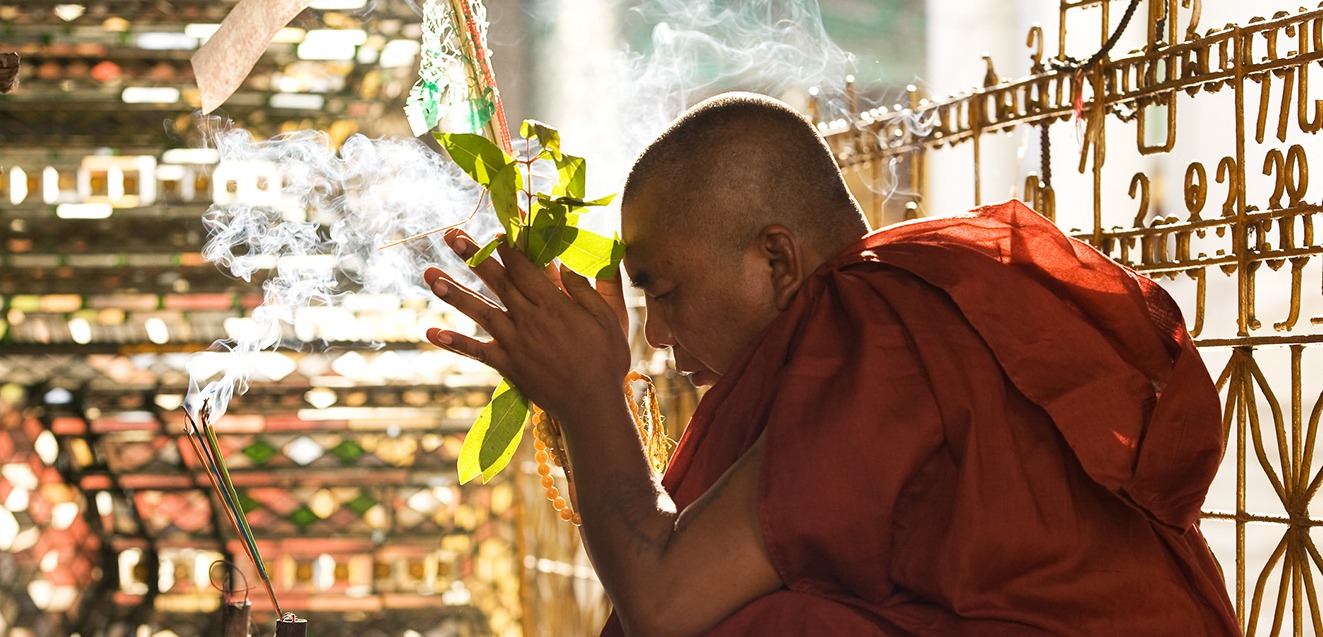
Many decades ago, when I was in flight school, I interviewed a pilot who had flown in Burma with the Flying Tigers. I was really intrigued and wanted to go there. My first trip, in 1982, was a whirlwind. In those days you could only get a 72-hour visa, and it was a complicated process getting the visa. The country was still called Burma then, and the capital was Rangoon, now Yangon. There was only one (government-run) tour company and one airline, Burma Airways, which only had three planes. Since then I’ve made more than 25 trips, and over the years, I’ve seen many changes throughout Myanmar.
Early Travel Memories
On my early trips, I really felt like I was an explorer. There just weren’t many travelers there. The place was so incredible, it was like being in a movie. The streets were quiet at night, but during the day they were busy and full of vendors. Later, the vendors moved into storefronts, but in those days, they were all open markets. Rangoon was a small city then, with mainly colonial-style architecture. It took about 12 minutes to get from the airport into town. Now it takes more like an hour. There were only a couple of hotels and The Strand was a dilapidated old colonial building along the river. I loved staying there because it was like stepping back in time. Today The Strand has been beautifully restored, but I’ll always remember the way it was back then. I miss the old days in Rangoon.
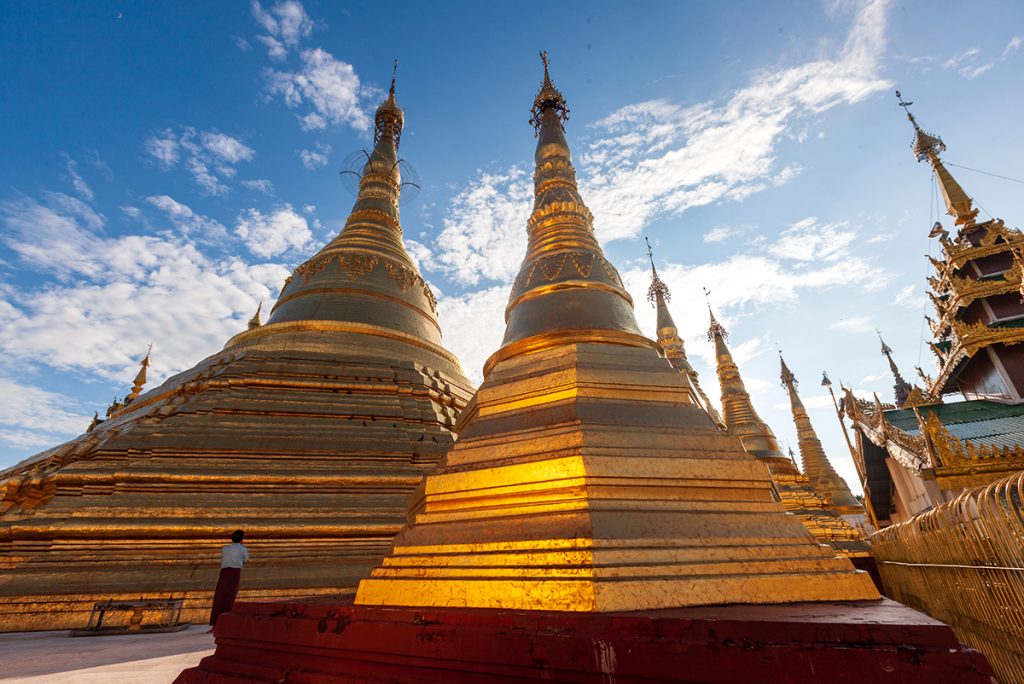
Once I led a trip for GeoEx down the Irrawaddy River, from Bhamo to Mandalay, on an old British-style steamer. It was an incredible trip. On the boat, it felt like we were in an old Agatha Christie movie set in the 1930s. We spent three days on the river visiting small villages. In these villages, there weren’t any cranes or other machinery, so you’d see people loading and unloading cargo onto each other’s backs. There’d be long lines of people carrying these heavy bags of supplies—flour, rice; it felt very exotic.
I went up north to Maymyo, a British hill station now called by the Burmese name Pyin Oo Lwin. It had beautiful large colonial buildings and the only transportation was by horse and carriage. Imagine getting place to place in these elaborate carriages, and there was no electricity.
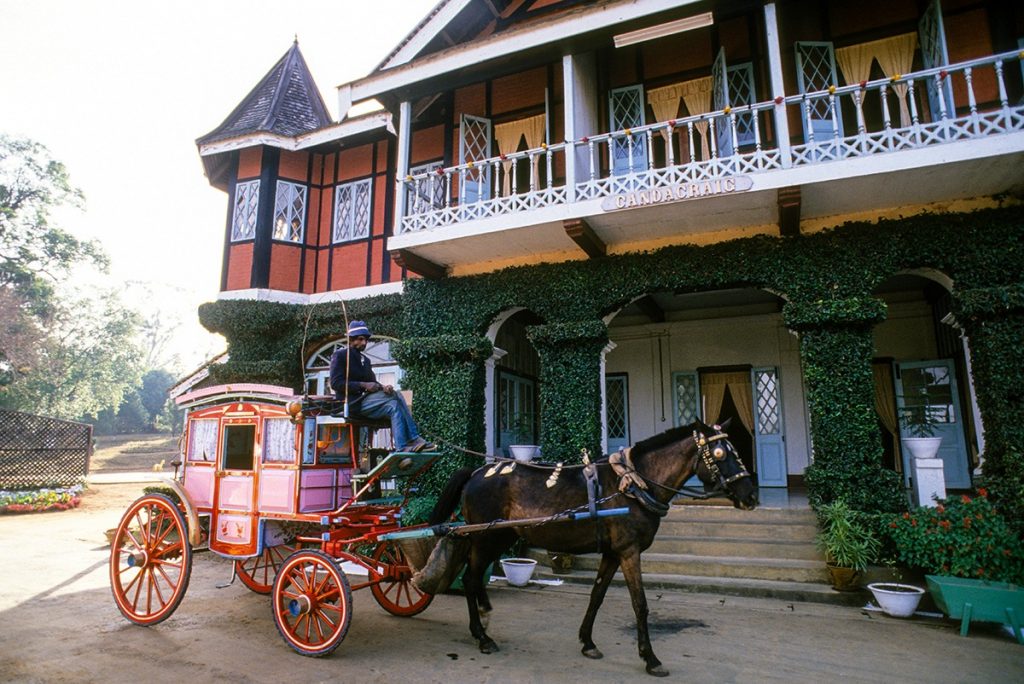
Inle Lake was another great stop. In the old days, I remember trading my Sony Walkman for souvenirs at the floating market. They weren’t interested in money when the kyat was still the currency; they wanted to trade, and you’d have to come up with something they wanted. Now that the US dollar is used, this tradition has faded. Inle is a large lake and there are now hotels along the shore, but you still take boats during the day and just glide around some of the floating markets, and temples are scattered along the banks of the lake.
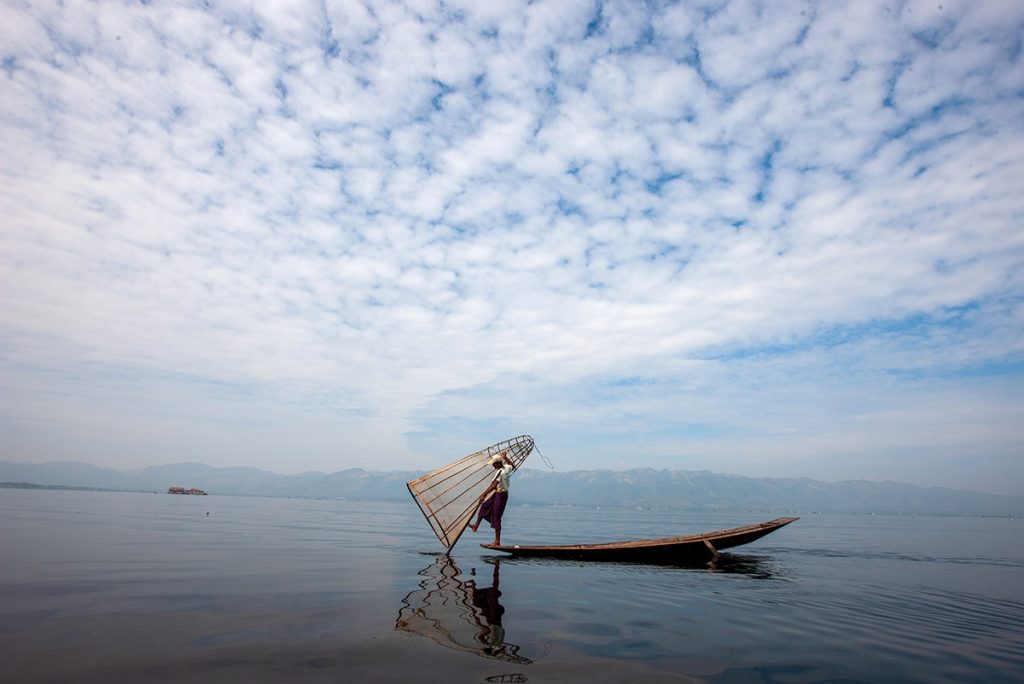
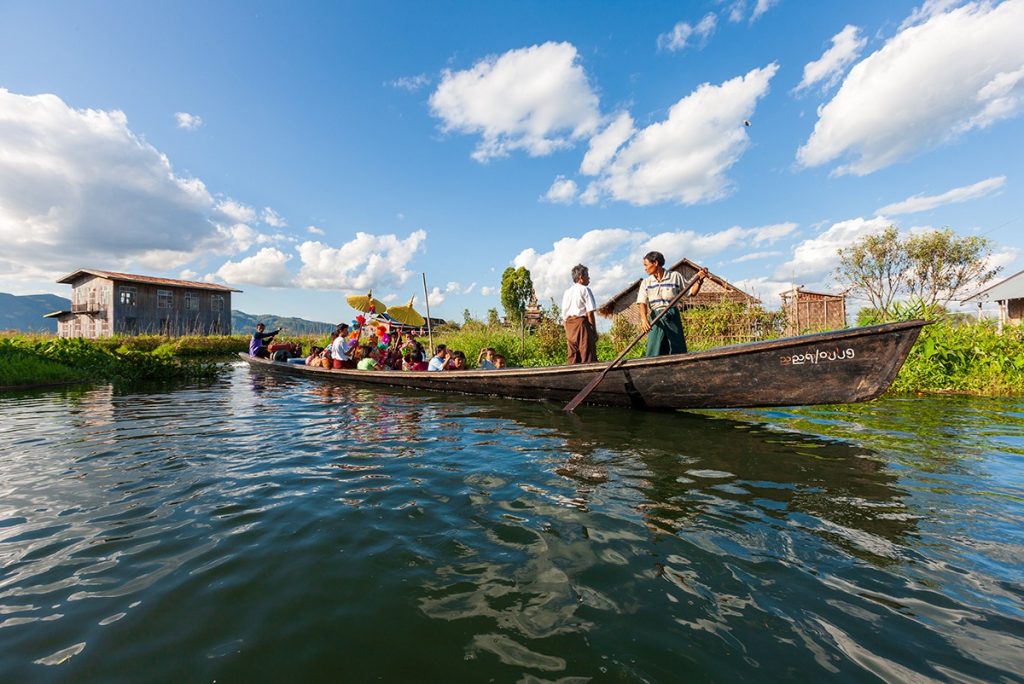
More recently, I went with my friend and guide to some remote caves. We climbed up a mountain in a 4WD vehicle and went into the jungle. I was going from cave to cave, enjoying the exploration and taking photographs, when all of a sudden, he screamed at me to stop! I backed off and there was a bright green snake in my path that I hadn’t seen. It turned out that this was a very poisonous snake. He probably saved my life!
Magical Monasteries and Temples
Pagan, now called Bagan, is my favorite place in Myanmar because there are thousands of temples. My favorite thing to do there is to get on a bicycle and just meander around the temples on my own in the early morning and late afternoon to photograph. The light is just incredible!
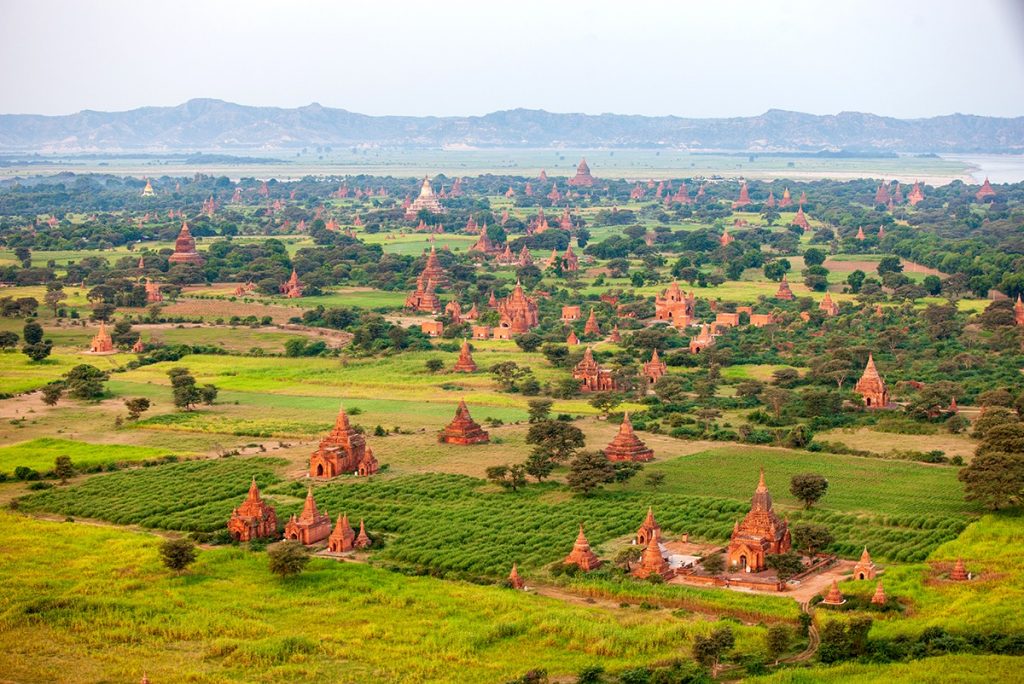
When I’m in Bagan, I think about the peace of the land. Being on that plateau in that desert listening to the sounds—of insects and animals—and just getting lost in there, you hear the softness in the sand and the trees and there’s a feeling of peace, total peace there. I find it incredible, wandering around in the sand and riding a bike and then you come around the corner and there is this beautiful abandoned temple. There are about 2,700 temples to explore on the Bagan plateau.
Even as tourism has increased since my first visit to Bagan, it’s still like something out of a movie. I fell in love with the place and kept coming back to Myanmar, especially to the temples of Bagan.
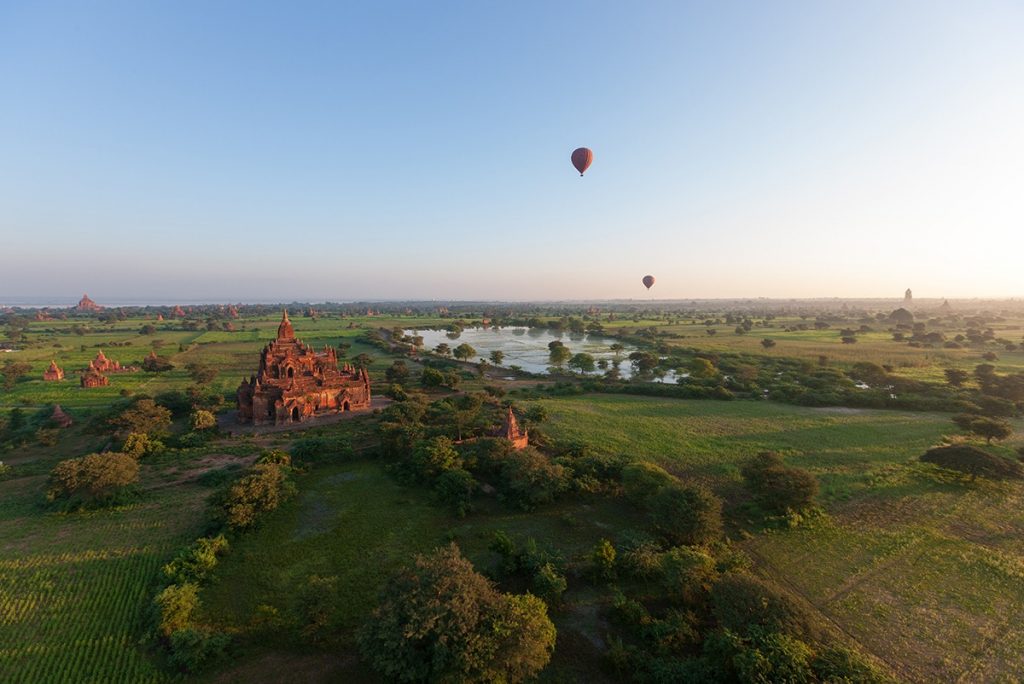
The other place I love is Mount Popa. It’s a high rock—an extinct volcano—and right on top of it is this incredible odd monastery with gods painted as humans; they are a kind of deity called nats.
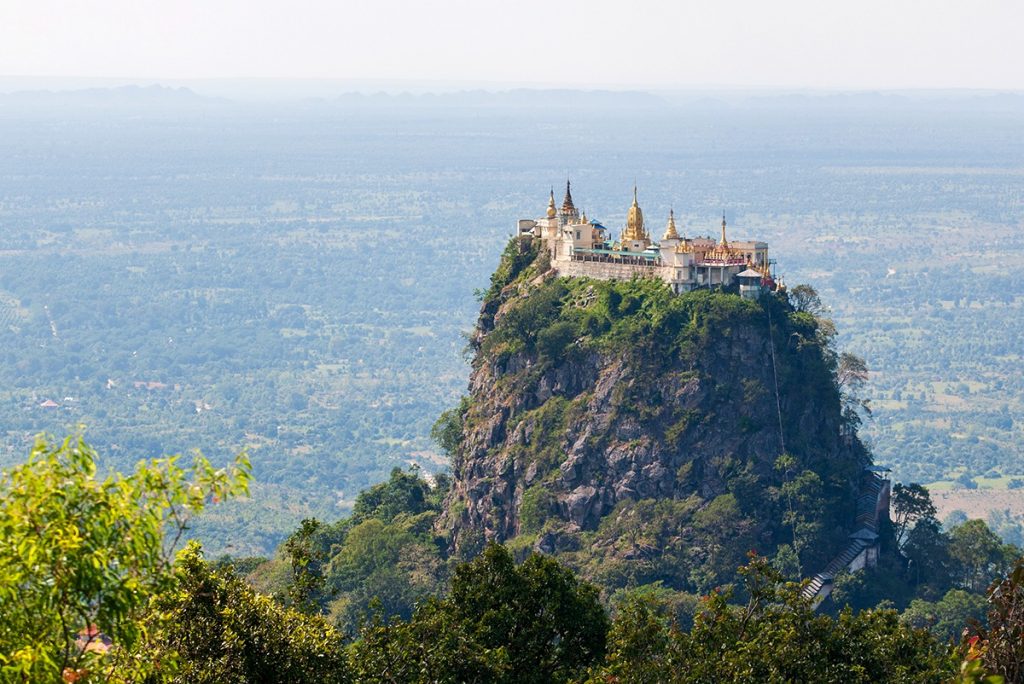
Myanmar is a deeply religious Buddhist country and the temples are all covered in gold. There’s a Buddhist statue in Mandalay and you cannot even see the Buddha because his whole body is covered with gold—layers and layers of gold, absolutely tons of gold. At any time of day or night when you go to these temples, like Shwedagon in Yangon, it’s just so surreal. The monasteries seem like they never close, they’re open 24/7. They are gathering places, and people spend hours there just sitting in the shade and talking with each other; they don’t only go for praying. During the military junta, the only place that people could go to freely and gather were monasteries, so it became a habit.
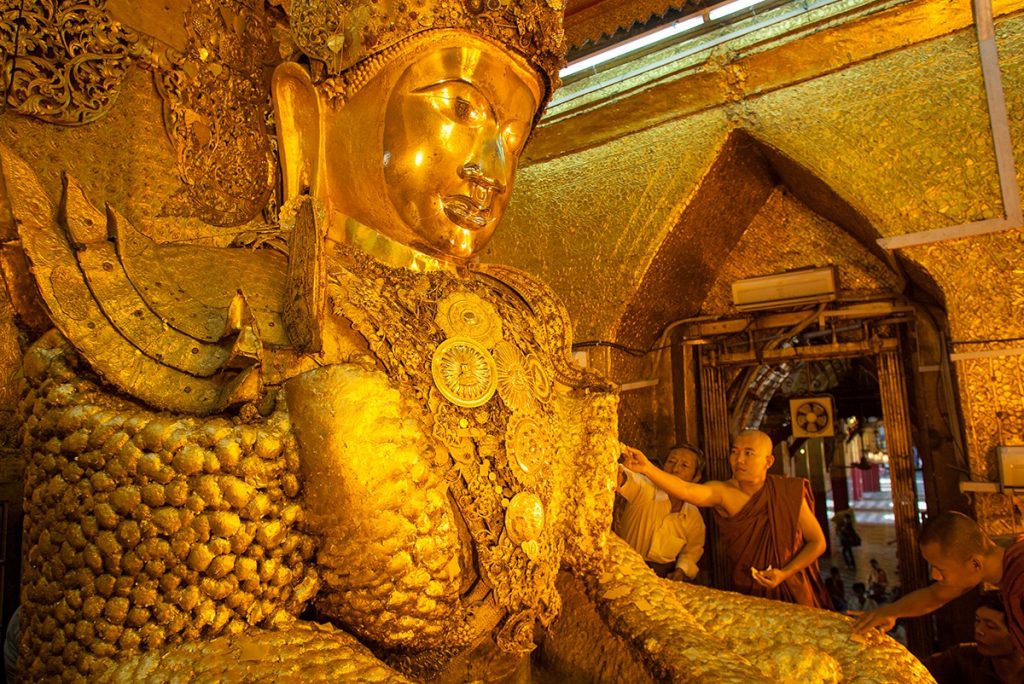
It’s interesting to see how the monasteries have changed from the first time I was there when they were totally dilapidated—with the exception of the major ones like Shwedagon in Yangon and Shwezigon in Mandalay. These days they’ve restored the temples and spires, even in the desert, and in the jungle up north.
Myanmar’s People
The Burmese people are very gracious, very hospitable, and they have a good sense of humor. It’s always fun to be there. I have a friend in Mandalay, he and his wife own a small tour agency, who acts as my guide—actually, he’s the one who saved me from the snake in the cave! He’s an avid mountain biker and he’s becoming this Burmese mountain biking legend; traveling with him is a lot of fun. The new guides I meet are also very accommodating and everybody is very polite and friendly.
The markets are always a great place to meet people, even when they’re geared towards tourists. The Burmese are such good negotiators, and when you have fun with it, everybody has a good time. The vendors are happy when they make a sale and the tourists are happy with their purchase.
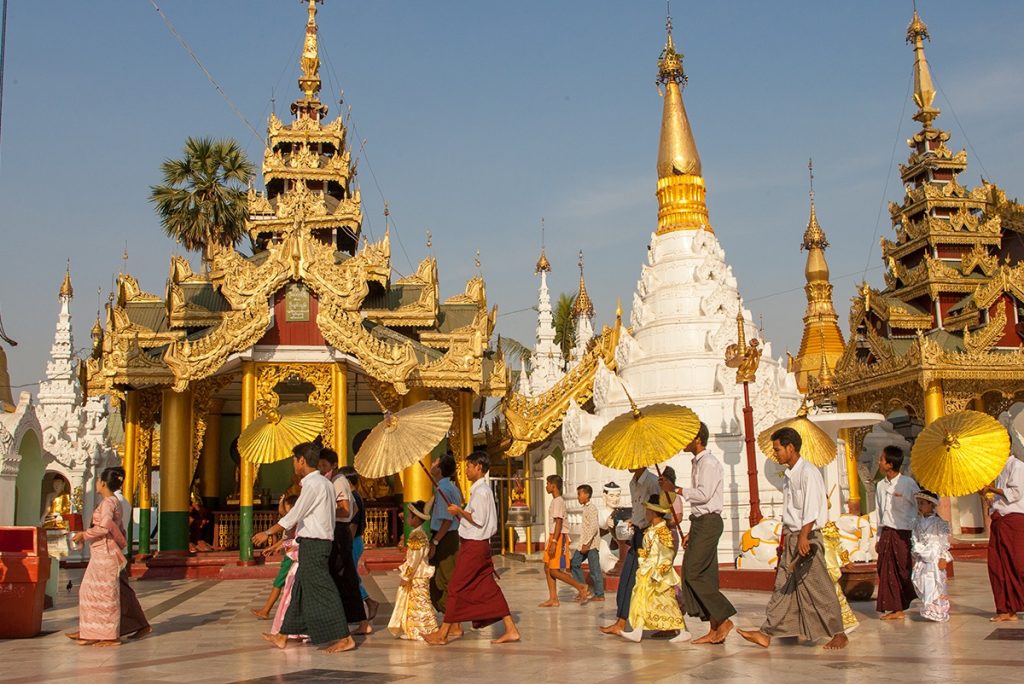
What I like about Buddhism is acceptance. The people in Myanmar are not judgmental and don’t seem resentful of anything. They welcome travelers and are very open about their culture. Even going through very difficult times over the past 50 years, people always seem to be smiling and enjoying life.
How to Travel in Myanmar
I recommend people travel with a guide, but then take some time off and wander around the temples and just feel what’s going on. Have the guide explain the religion, history, and culture, and then just be alone there for a while—roam around and take it all in. What I usually tell people is: go into town, lose yourself, and try to find your way back to your hotel. Just be part of the environment, so to speak.
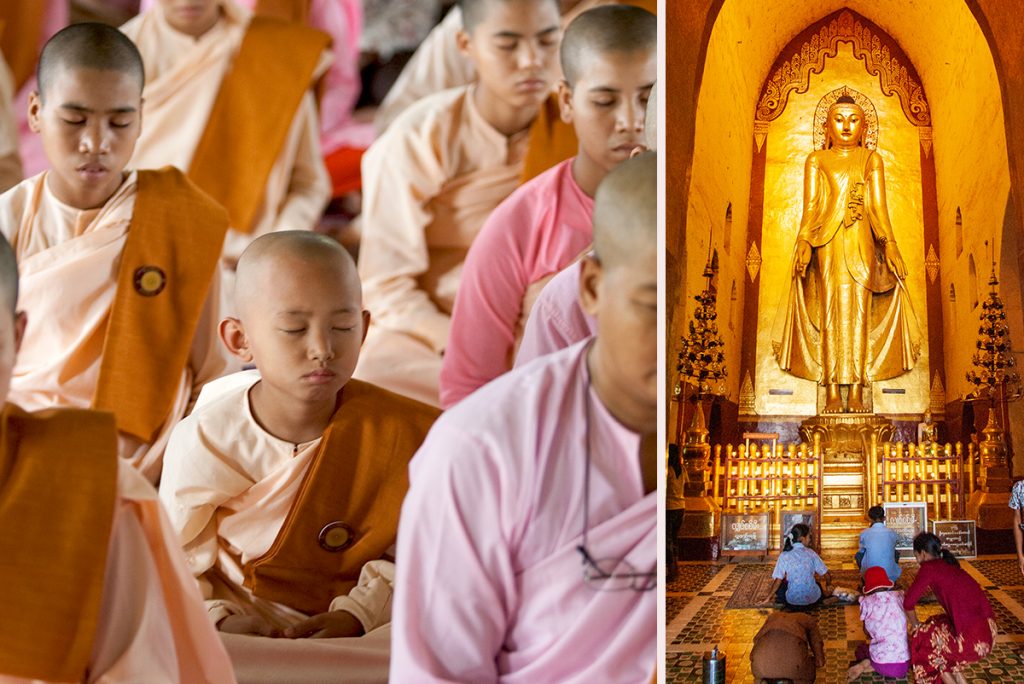
When it comes to festivals, or really anything, you need to be right in the middle of it, in the environment. If you observe from far away, you don’t come away with the same experience.
Going down the Irrawaddy River on an old steamer is another way to be in the environment—for me, that’s the beauty of it, to just sit on the deck and watch the life go by, literally.
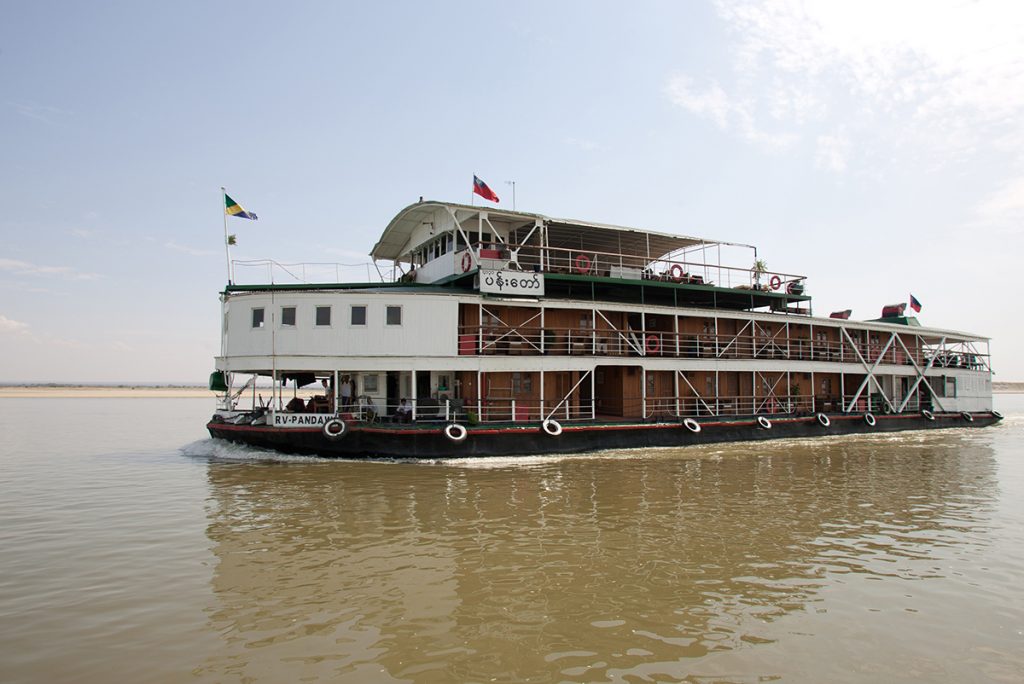
If you’re thinking about a trip to Myanmar, one of the best books I’ve read is called The Piano Tuner, by Daniel Mason. I’d highly recommend it to anyone who wants to go to Myanmar. It’s about a 19th-century British piano tuner who was asked to go to northern Burma from London to tune the piano of a British general. There’s a beautiful description of traveling by steamer from the UK to Burma and going up north into the country. Another great book that I read a couple years ago, one of those you cannot put down, is called The Narrow Road to the Deep North, by Richard Flanagan. I loved that book. It’s about the Second World War and Allied prisoners under the Japanese building the railway in Burma. It’s one of those books, whether you go to Myanmar or not, that gives you an idea of what the country is all about.
Best Time to Travel in Myanmar
For me, one of the best seasons to go to Myanmar is during the water festival in the spring because the whole country goes wild! They have water fights in every city—they have water hoses, and as you walk by, they just drench you in water. I think smaller villages are a lot more fun because they only use water buckets, but as you walk around you still get all wet. It’s a lot of fun. Everybody is happy and waiting for the rains to start. I love to get right into the mess—this is not a time to stay at a safe distance. I just keep my camera in a waterproof bag with a built-in window that I can shoot through.
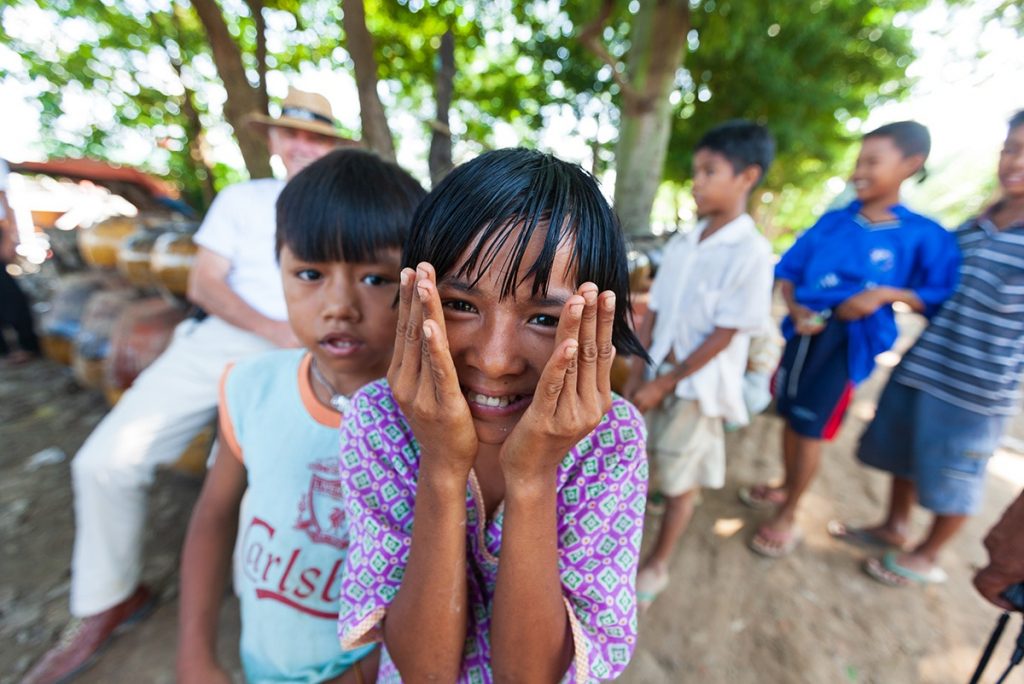
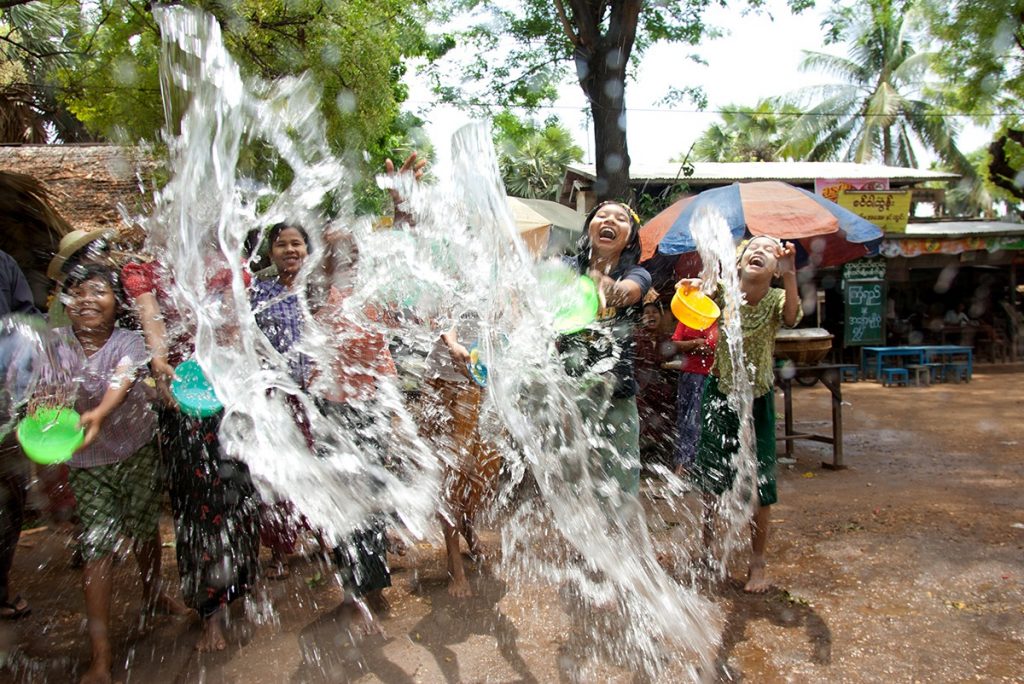
Summer is very hot. However, the upside is that there are very few tourists at that time.
Fall is the busiest time to go; the weather is nice and dry September through December. Still, off the beaten track there is always a lot to be discovered with fewer people. You need to have patience to deal with some inconveniences in more remote locations but just go with an open mind. There is so much to see and so many places to go. I discover something new every time I’m there.
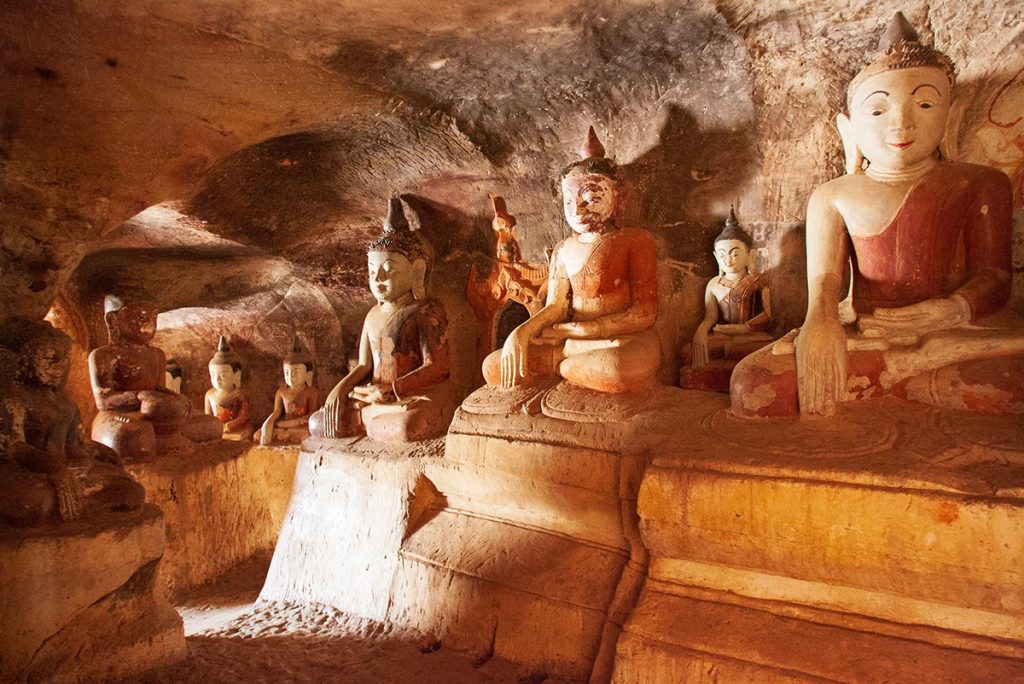
I even like the rainy season when there are not many travelers, even in Bagan. I’ve been there enough times now that I know the best times to visit temples to avoid crowds, so when I go with a group, I usually reverse the order of the day, so there are fewer people at the temples when we arrive. The thing with Myanmar is you can go at any time!
Another great experience, if you can catch it, is the time when young men leave home for the monastery. The timing varies, but fall is the best season to see this. The boys are taken to the monastery and the monks shave their heads before they take them in. The whole village celebrates. Witnessing that is an experience you’ll never forget.
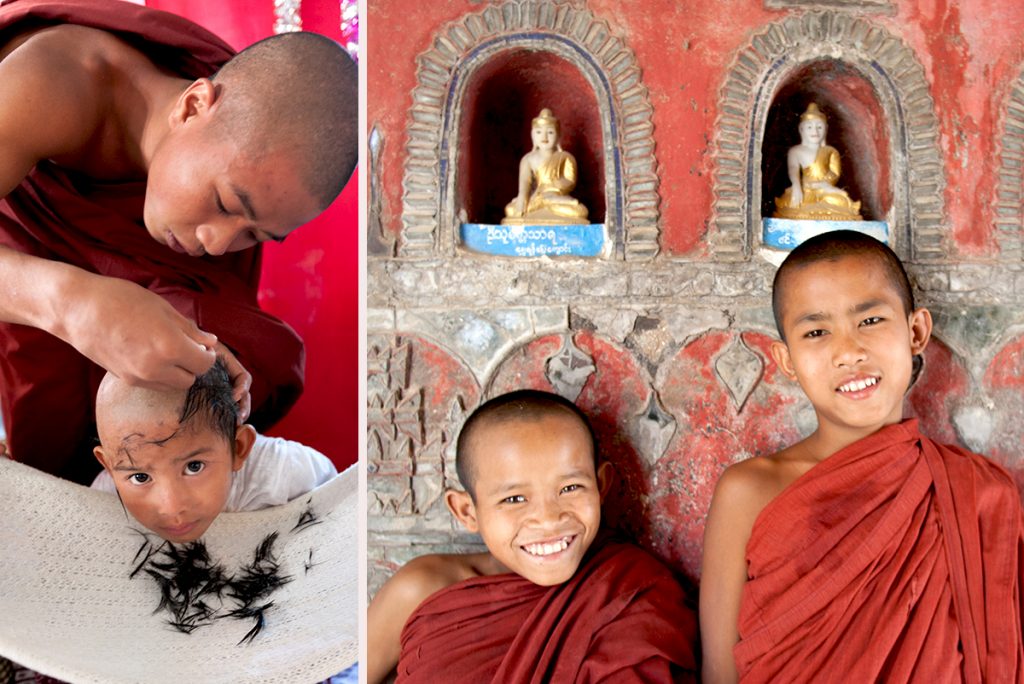
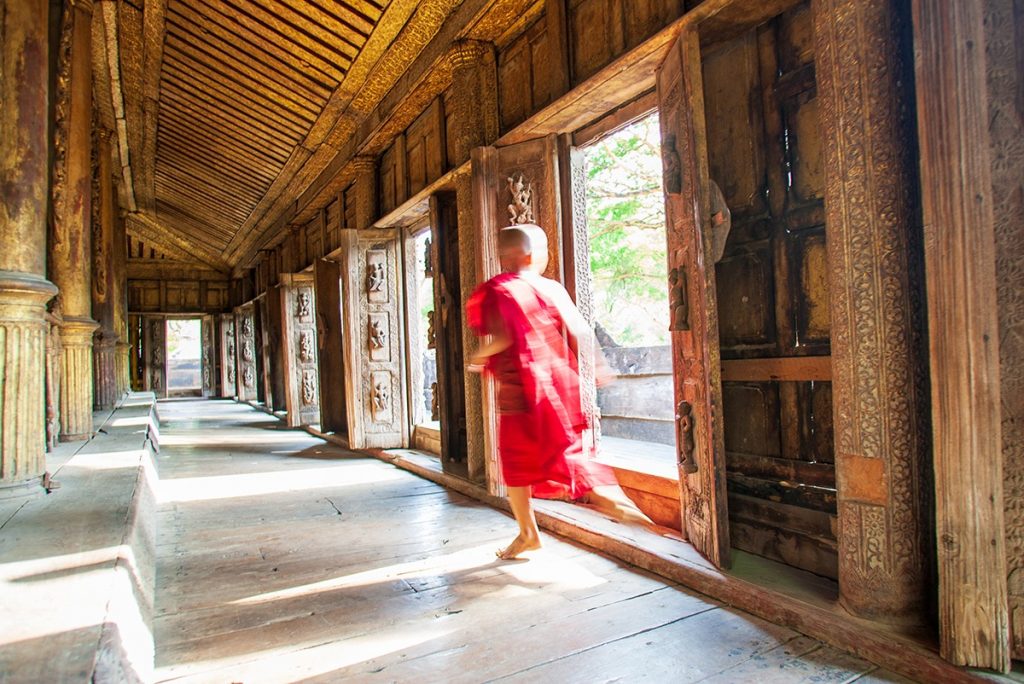
Perspective on Travel
I like to go to remote areas and explore. It’s part of my nature and I’ve always been that way. Myanmar was a natural fit for me. I’ve fallen in love with different aspects of the country over the years—I really enjoyed the water festival a few times and going to some really remote areas. Easy places to travel, almost everybody else is going. But a hard place to travel is where you can really enjoy being away and challenging yourself, being out there—just you and the elements.
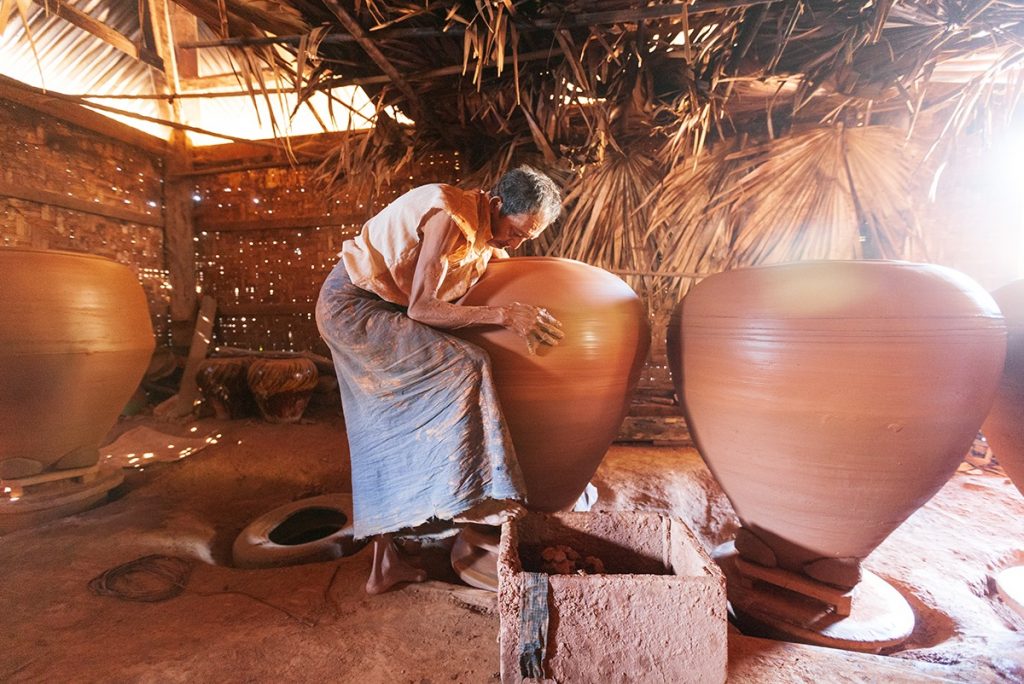
The desert plain of Bagan is always calling me. There’s something about the light and the peacefulness of the desert—you can get away from it all and you realize that you don’t need much to survive. I think that’s why I’m a minimalist, I don’t keep much. But I keep Myanmar in my heart and mind, always.
Looking Ahead
After the current pandemic, when international travel starts again, I think it will take a while for Myanmar to open up and see the visitor numbers increase. The first months after travel begins again there will be very interesting, but I doubt the sense of real adventure that you found in the early days of travel there will be the same.
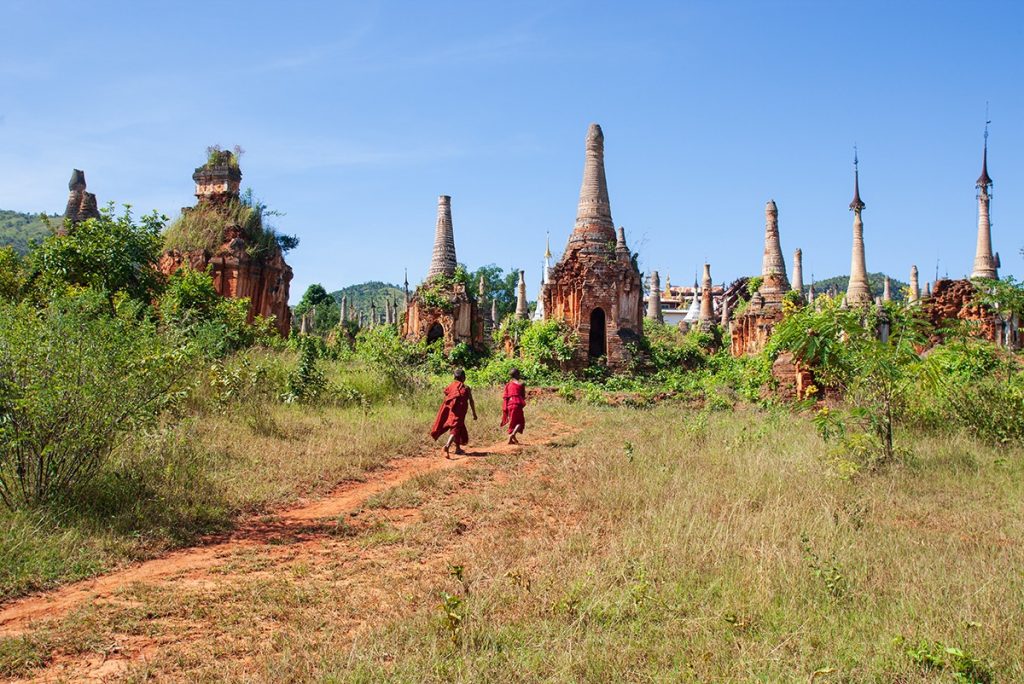
Still, personally, I would love the opportunity to be on the first flight into the country and get to Bagan without anyone else there—wandering around the temples, getting lost, smelling the air and listening to the wonderful sounds of the horse-drawn carriages, farmers working their fields, and monks chanting. That would be heaven for me.
Editor’s note: In presenting these reflections of Myanmar, we also want to acknowledge the tragic conflict and forced displacement of the Rohingya people under the current Burmese government. Sending GeoEx guests to a destination is never meant as an endorsement of the government’s policies or actions. Over the years, our Burmese in-country colleagues have advised us that tourism provides essential support for on-the-ground businesses, and demonstrates that the world is not cutting them off despite their government. Our travelers have also consistently remarked on the wonderful connections they have made with the people of Myanmar; their kindness, generosity, and willingness to teach about their varied cultures have bestowed a deeper and more nuanced appreciation of the country. In Myanmar, as everywhere, we wholeheartedly believe that travel fosters international understanding and builds bridges of connection that can be a powerful force for good in the world.
* * * * *
Vassi Koutsaftis is one of GeoEx’s best-loved and most experienced leaders. He has been traveling in Asia for more than 35 years, leading treks since 1986, and winning many esteemed travel awards. More of his photography can be found on his website arclight-pictures.
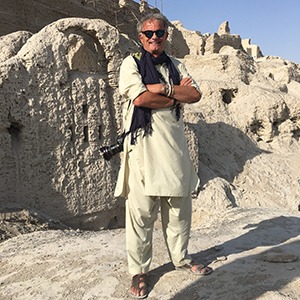
We encourage you to share your thoughts below, we’d love to hear from you!
When the time comes, GeoEx is here to tend to your wanderlust. If you have any questions about upcoming trips or booking future travel, we encourage you to call us at 888-570-7108.
I traveled to Myanmar in 2006 in February. All day along the roads young monks were collecting wood. It was the night of the full moon, the longest night of the year and very cold. They built bonfires at monasteries around Lake Inle and all night they burned while the monks chanted. Magical! The next day we traveled down the lake by boat to a forge where they were making bells and gongs, visiting weavers, floating markets and craftsmen along the way. In Bagan, my guide had grown up there playing among the temples. He took me to a smaller… Read more »
My wife and I spent a fabulous 10 days in Myanmar with Vassi in 2018. Our experience was fully consistent with his descriptions in this article. However, in the light of recent events, it is hard for me to accept his statement “What I like about Buddhism is acceptance. ” I think the Rohingya people might not agree. When GeoEx promotes tourism in places like Myanmar as well as other nations with serious governance issues, I would like to see some acknowledgement of those issues and how tourism might advance progress toward addressing them.

